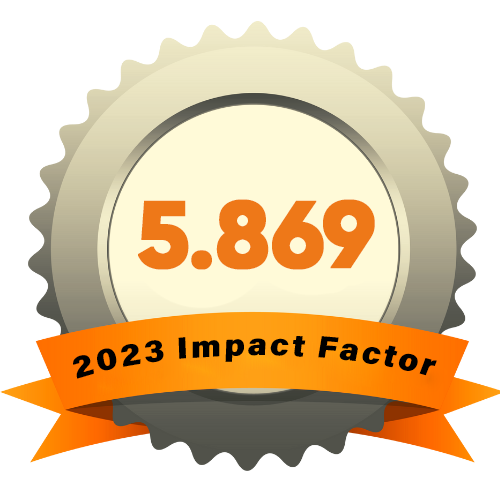СОЗДАНИЕ И ЗНАЧЕНИЕ ЯЗЫКАЛИНГВИСТЕЧЕСКОГО КОРПУСА
Ключевые слова:
корпус, искусственный интеллект, лексическая информация, морфологический признак, слово.Аннотация
В статье рассматривается трансформация языка в язык Интернета, компьютерные технологии, математическая лингвистика, ее продолжение и становление и развитие компьютерной лингвистики, в частности вопрос моделирования естественных языков для искусственного интеллекта. В частности, исследуется вопрос лингвистического и экстралингвистического разделения специальных тегов для маркировки текстов и их компонентов. Определены требования к кодированию важной текстовой информации. В статье рассматривается основное назначение корпуса как сложного лингвистического источника, а также тот факт, что он в основном содержит два вида информации и ее типы. Национальный корпус, образовательный корпус и параллельный корпус обсуждаются в рамках предмета компьютерной лингвистики. Было подчеркнуто, что их лингвистическая и экстралингвистическая маркировка, разработка алгоритмов формирования корпусов и создание корпусной лингвистической поддержки являются общественной потребностью.
Библиографические ссылки
Belyaeva, L.I., Chizhakovsky, V.A., (1983). Thesaurus in automatic text processing systems., Chisinau.
Bloomfield, L., (1968). Language. Moscow, "Progress".
Bongers, H., (1947). The history and principles of Vocabulary control, Woerden: WOCOPI.
Britvin, V.G., (1983). Applied modeling of syntagmatic semantics of scientific and technical text (by the example of automatic indexing), Moscow State University.
Charlez, Meyer, (2004). English corpus linguistics: An introduction. Cambridge University Press, UK, 168 p.
Eshmuminov, A., (2019). Synonymous database of the Uzbek language national corpus. Dissertation of PhD in Philology, Tashkent.
Fries, Ch.C., (1969). The structure of English. An introduction to the construction of English sentences, London.
Hamroeva, Sh., (2018). Linguistic bases of creation of the author's corpus of the Uzbek language: Author’s Abstract of the Dissertation of PhD in Philology, Tashkent.
Karimov, R., (2021). Linguistics and programming issues of creating a parallel corpus of Uzbek and English, Author’s Abstract of dissertation of PhD, Bukhoro, 151 p.
Kholiyorov, O., (2021). Linguistic bases of formation of educational corpus of Uzbek language. Author’s Abstract of the Dissertation of PhD in Philology, Termiz.
Kotov, R.G., (1977). Linguistic aspects of automated control systems. Moscow, Nauka.
Kutuzov, A.B., (2017). Corpus linguistics. Retrieved from: http://lab314.brsu.by/kmp-lite/kmp-video/CL/CorporeLingva.pdf ;
Leech, G., (1991). The State of Art in Corpus Linguistics, English Corpus Linguistics, London.
Melchuk, I.A., (1985). Word order in the automatic synthesis of the Russian word (preliminary messages), Scientific and technical information, 12:12-36.
Mengliev, B., (2018). Is the Uzbek language corpus being created? Ma'rifat newspaper. April 3, 2018, retrieved from: http://marifat.uz/marifat/v_pomosh_uchitelu-marifat/savol/1142.htm.
Mengliev, B., Bobojonov, S., Hamroeva Sh., (2018). Uzbek National Corpus. April 26, 2018, retrieved from: http://marifat.uz/marifat/ruknlar/fan/1241.htm.
Mohamed Zakaria Kurdi, (2016). Natural Language Processing and Computational Linguistics: Speech, Morphology and Syntax, Great Britain, USA: Wiley-ISTE, 300 p.
Nedoshivina, E.V., (2006). Programs for working with text corpuses: an overview of the main corpus managers. Study guide, St. Petersburg, 26 p.
Plungyan, V., (2005). Why are we making the National Corpus of the Russian language? [Electronic resource], Notes of the Fatherland, 2:20, retrieved from: http://magazines.russ.ru/oz/2005/2/2005_2_20-pr.html.
Pulatov, A. Q., (2011). Computer Linguistics. Tashkent, Akademnashr, 520 p.
Rykov, V.V., (2005). A course of lectures on corpus linguistics. URL: http://rykov-cl.narod.ru/c.html.
Shomsku, N., (1962). The logical basis for linguistic theory, Proceedings of the IX International Congress of Linguists.
Sinclair, D., (2004). How to use corpuses in teaching a foreign language, Preface to the book, Studies in Corpus Linguistics, 12, VIII, 308 pp. retrieved from: http://www/ruscorpora.ru/corpora-info.html.
Toirova, G., (2019). The Role of Setting in Linguistic Modeling. International Multilingual Journal of Science and Technology, 4(9):722-723, available at: http://imjst.org/index.php/vol-4-issue-9-september-2019/.
Toirova, G., (2020). About the technological process of creating a national corpus. Foreign languages in Uzbekistan, 2(31):57-64, available at: https://journal.fledu.uz/uz/2-31-2020.
Toirova, G., (2020). The importance of the interface in the creation of the corpus. Ínternauka, 7, DOI: https://doi.org/10.25313/2520-2057-2020-7-5944.
Toirova G.,Yuldasheva M., Elibaeva l. Importance of Interface in Creating Corpus. // International Journal of Recent Technology and Engineering (IJRTE) ISSN: 2277-3878, Volume-8 Issue-2S10, September 2019. –P.352-355. (scopus)
Toirova G., Jurayeva O., Abulova Z., Norova M., Norova F. Application of Innovative Technologies in Teaching Process. // International Journal of Psychosocial Rehabilitation, Vol. 24, Special Issue 1, 2020. ISSN: 1475-7192.–Р.386-390. (scopus)
Zakharov, V.P., (2011). Corpus linguistics: a textbook for students of humanitarian universities, Irkutsk, 161 p.












